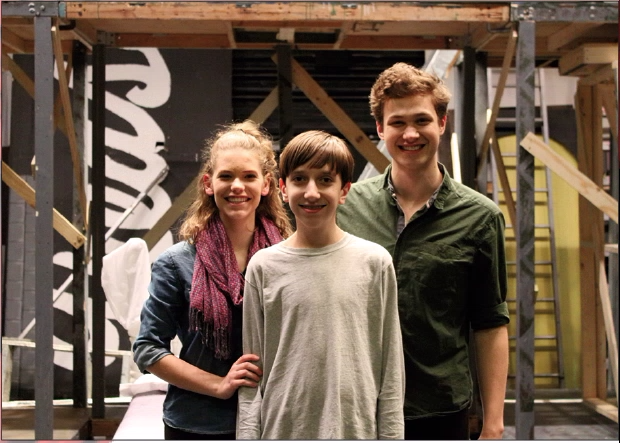Dance Dance Revelation
From left to right: Lydia Noll, ‘19, Peter Godsey, ‘21, and SENIOR Augustus Corder. Corder plays Pippin, the protagonist. Noll plays Catherine, Pippin’s love interest and the mother of Theo, played by Godsey.
February 16, 2018
From The Lion King Jr. to Ragtime, the students of the WHHS theater department have impressed audiences and Cappies critics alike again and again. This year they are back on stage to lure audiences in to the colorful, magical world of Pippin. The production takes choreography on the high school stage to a new level.
Pippin reflects its Broadway counterpart, beginning with the flashy opening number, “Magic to Do.” The audience is introduced to the Leading Player, played by Maya Robinson, ‘19, who invites them to join the magic of the show. Meanwhile, the featured dancers and ensemble showcase some of the production’s most extensive choreography. The number also includes elements of acrobatics like flips and splits, reminiscent of a circus performance as the story begins.
The title character, Pippin, played by SENIOR Augustus Corder, is the son of the king, played by SENIOR Declan Robison, and a young actor in the Leading Player’s troupe. “[Pippin] is a show within a show, so a lot of what happens kind of highlights a lot of the different aspects of musical theater and dance and music,” SENIOR dance captain Nina Riber said. “I think it’s kind of a good way to showcase it.”
The choreography of Pippin is essential to its plot, especially for the ensemble and featured dancers, who express their part of the story almost entirely in dance. “I think [dance] is probably one of the most important parts,” dance captain Molly Munn, ‘20, said. “As the players, we’re trying to seduce Pippin. The music is what we do best, music and dance, to get [Pippin] to do what we want him to do.”
The emphasis that Pippin puts on dance to bring the show to life sets it apart from other WHHS musicals. “It’s really based on dance and a particular type of musical theater or choreography called Fosse, which is definitely different from other shows we’ve done,” featured dancer Grace Davis, ‘19, said.
Fosse style dancing, named for Pippin’s original choreographer, Bob Fosse, can be described as jazzy and sensual. In 1973, Fosse won two Tony awards for his inventive work on Pippin. He is also known for the choreography in the musical Chicago. One of the most famous Fosse dances is the “Manson Trio.”
Two featured dancers, Kennedy Nadermann, ‘20, and Colby James, ‘21, join the Leading Player for an iconic Fosse number combining jazz hands and the theme of war. As seen in this dance, Pippin relies on its dancers to show the allure of performance hand in hand with its many darker themes.
The theater department has never been afraid to push the limits and try new things. From the casting of a female Caesar in Julius Caesar to the thrilling stage combat of She Kills Monsters, their productions are anything but predictable. Pippin plays from Feb. 15 through 17.






